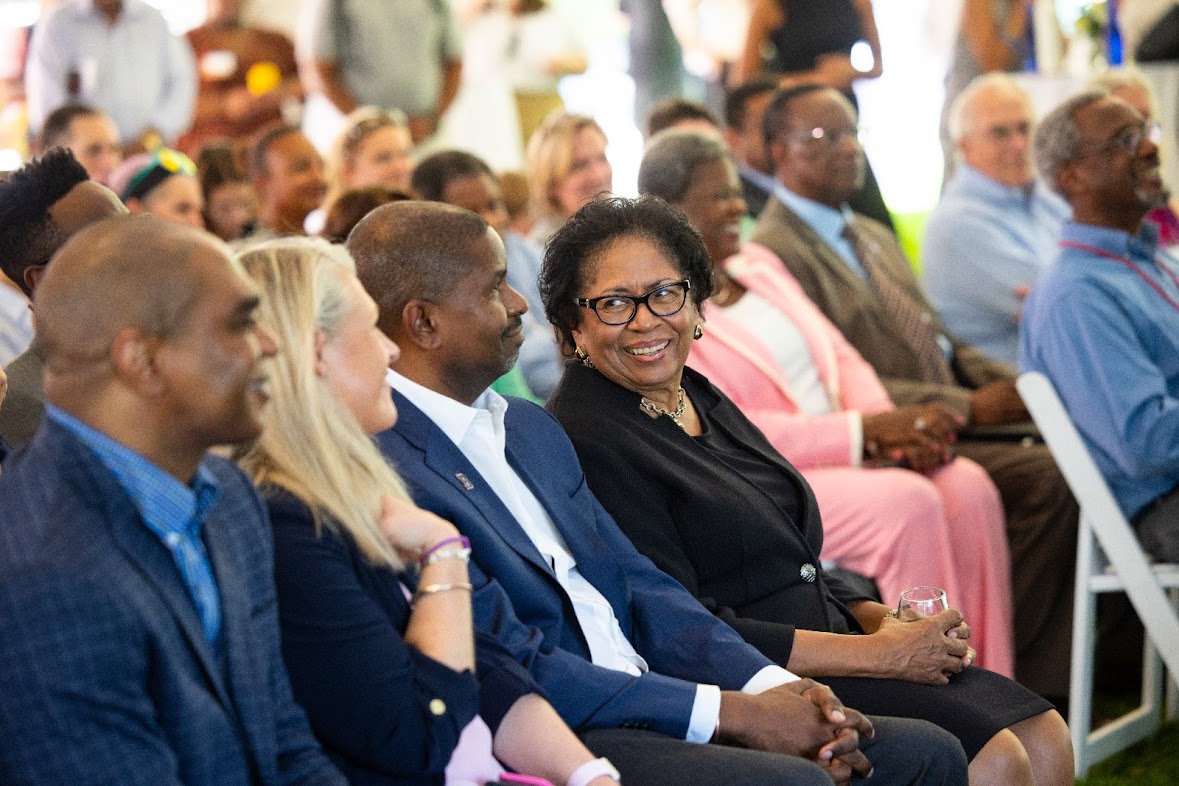
I remember Craig Heimark '76, P'11, P'14, P'17 and I meeting the newly appointed President Simmons on her first trip to the West Coast. We met for lunch at the Ritz-Carlton, San Francisco. The three of us engaged in a pleasant conversation about our academic interests and our international career experiences. President Simmons shared her goals for Brown in the areas of need-blind admissions, faculty hiring and expansion. Craig pegged her as a skilled operational executive. We observed her as a quick study no-nonsense focused leader. Her decisiveness shone through her charming demeanor. It comes as no surprise that, under Dr. Simmons' leadership, Brown underwent a shift towards need-blind admissions for U.S. applicants, thanks to the funds raised by the Boldly Brown Campaign where Craig and I served as co-chairs on the West Coast.
Early in Dr. Simmons’ tenure, she instituted Presidential Advisory Committees for which she would appoint interested and active alumni to participate. She asked me to serve on the Advisory Council on Admissions and later on the Presidential Leadership Council. In both these groups, I was able to see the impact of her quick insightful action and her ability to raise funds for the next set of goals. So when, as an Emerita, she reached out to ask if I would be interested in joining the Center for the Study of Slavery and Justice’s (CSSJ) — now known as the Simmons Center — advisory board, I said yes immediately. She and Debra Lee, her co-chair, in spite of their busy day jobs, managed to bring this new young council to life. They, with the talented Director Tony Bogues, were able to shine the light on the CSSJ origin story and garner national attention.
Our early efforts raised enormous awareness if not commensurate funds. The consortium of Universities Studying Slavery (USS) located at UVA has grown from a handful of institutional members in 2016 to currently listing 100 participating institutions in 2023. Dr. Simmons shared recently that more than one-third of the outreach she now receives involves the subjects of slavery and justice. After completing my tenth year as a CSSJ Council member, I learned more of the origin story of the CSSJ during an address by Dr. Simmons at The Oprah Winfrey theater at the Smithsonian's National Museum of African American History and Culture. The story actually began in 2001 when, as the newly inducted President at Brown University, Dr. Simmons was asked to comment on the University’s historic ties to the slave shipping businesses that funded and physically contributed to its construction. Her answer to that question was strong and provocative. She responded that Brown University is an institution of learning, research and scholarship. She committed that the question would first be explored through excellent research. The research would provide an important foundation for the Brown community to understand and grapple with its findings. What began as a probative question twenty years ago led us to the current moment where institutional self-studies are part of a movement at hundreds of academic institutions around the world.
Time has taught us that scholarly research properly done can provide missing links to questions unanswered. In this query we now know that this research would rescue historic truths that without attention could have been lost at sea. I will probably never know whether the omission of the origin story was an oversight or a purposeful decision. Regardless, the decisive manner in which Dr. Simmons responded to the 2001 question and her perseverance to have Brown self-study, present the findings, and grapple with its legacy is one of the most courageous moments any leader had to publicly manage. Imagine the moment — the first African American and the first woman to become an Ivy League President is questioned about Brown's part in slavery at her debut public discussion. With quick wit and decisive voice she challenges her new institution to face its previously unexplored history. Dr. Simmons gave us a lesson in courage, character and strategic vision. Not only was she a pragmatic operational executive, she is a force for truth and transparency — rare attributes especially in our current times. With the renaming of the CSSJ to the Ruth J. Simmons Center for the Study of Slavery and Justice, we honor her courage and foresight.